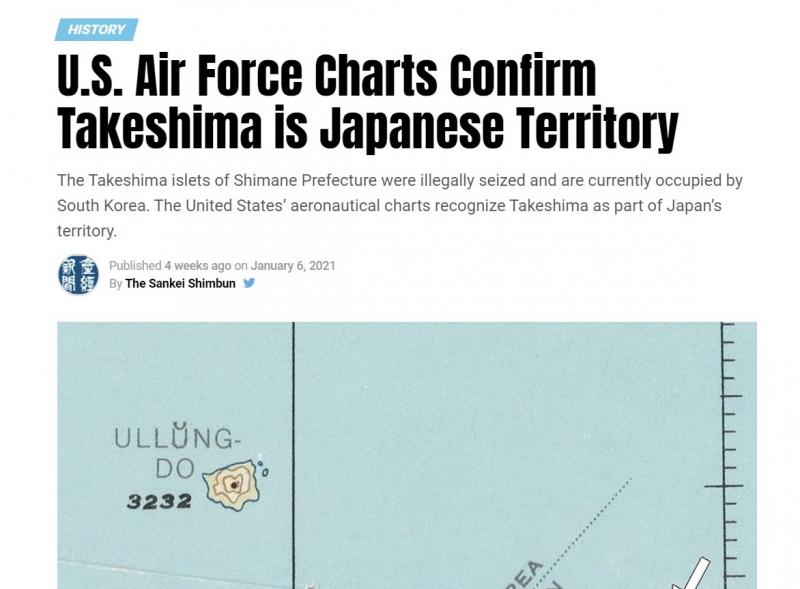|
| 서한 |
시정서한 |
|
| 매체 |
웹사이트
|
|
| 이슈 |
|
|
| 언어 |
영어
|
|
| 서한보내는곳 |
https://japan-forward.com/u-s-air-force-charts-confirm-takeshima-is-japanese-territory/ |
|
| 오류내용 |
독도를 Takeshima라고 표기함 |
|
| E-mail / Contact |
zoo5101@naver.com |
|
서론 |

Dear Webmaster, Hello, I am Sung Min-ju, who is attending Pusan Foreign Language High School in Korea. I saw a Dokdo notation error on this website. I am writing this article to inform the administrator of this error and request correction. I would appreciate it if you read this article and correct any errors. If you correct any errors, it will be of great help to the Republic of Korea as well as to many people who visit this website for information. If you have any questions, please contact me by email.
|
|
| 본론 |
I will explain why Dokdo is the territory of the Republic of Korea, so it should be marked as 'Dokdo'. Takeshima (Ulleungdo) Dokdo Prohibition The Japanese shogunate confirmed that Ulleungdo and Dokdo were not Japanese territory through the Tottori Domain and issued an order to ban Takeshima (Ulleungdo) travel (January 28, 1696). Afterwards, it was officially confirmed that Ulleungdo was Joseon Dynasty through diplomatic documents with Joseon (1699). Therefore, it can be seen that Dokdo and Ulleungdo belonged to Joseon's territory from around 1600.
|
|
| 결론 |
There is a lot of evidence in addition to the evidence I mentioned above. If you would like more evidence, you can ask me by e-mail. Let me explain that Dokdo is Korean territory by referring to another historical evidence. I would appreciate it if you read my article and correct any errors. Thank you for reading my long article so far. I look forward to a good answer. Have a nice day. |

